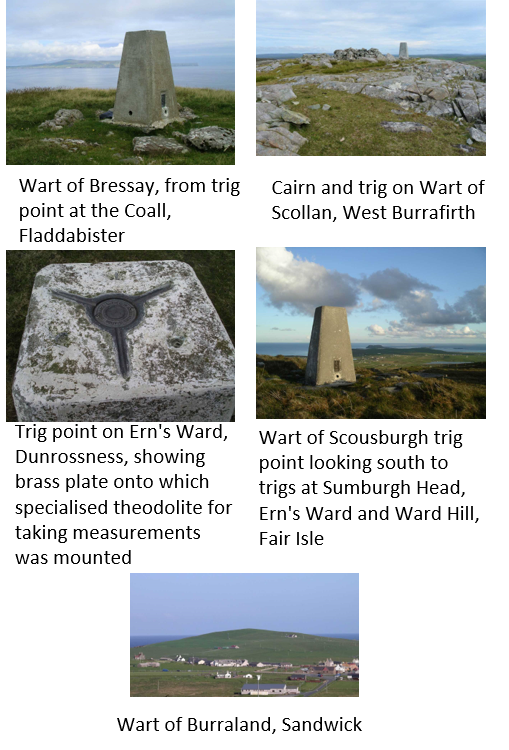Place name of the week - Warts and Trigs
Published: 28 April 2020

With better weather and longer days, why not take your daily walk to your nearest wart or trig point and look around to see how many others you can spot. Over 200 Shetland place-names include wart/ward vord, virt/vird, firt/fird, all from Old Norse varða meaning a watchtower, cairn or a heap of stones placed on a hill or mountaintop. Warts were in high or prominent locations in sight of each other and have been used for signalling or raising alarms by lighting fires, and as landmarks used in fishing meids to identify fishing grounds
Many names describe their location or characteristics (Wart of Olnesfirth, Mossy Wart) and some are named after people or the associated wildlife - Heukminnavird (hillmen’s wart), Simon’s Wart and Ern’s Wart (sea eagle’s wart).
Trig points are located on over 20 warts. The Ordnance Survey erected these concrete triangulation stations,1936-62, when creating the British National Grid, the co-ordinate system still used today. Angles were measured, distances calculated between sight lines of at least three trig points, and measurements plotted to give a series of accurate maps of different scales. Today trigs have been superseded by use of aerial photos, digital maps and GPS.
Warts with trigs include Gallow Hill/da Vord (Unst), White Grunafirt (Northmavine), Bruary Wart (Skerries), the Wart of Culswick and Virda Field (Papa Stour). The Wart of Scousburgh is the highest of these (263 m), and on a clear day you can see trigs on the Warts of Bressay, Helliness, Veester and Burraland, Ern’s Ward and even Ward Hill in Fair Isle.
We hope you have enjoyed this blog.  We rely on the generous support of our funders and supporters to continue our work on behalf of Shetland. Everything we do is about caring for Shetland's outstanding natural and cultural heritage on behalf of the community and for future generations. Donations are welcomed and are essential to our work.
We rely on the generous support of our funders and supporters to continue our work on behalf of Shetland. Everything we do is about caring for Shetland's outstanding natural and cultural heritage on behalf of the community and for future generations. Donations are welcomed and are essential to our work.

